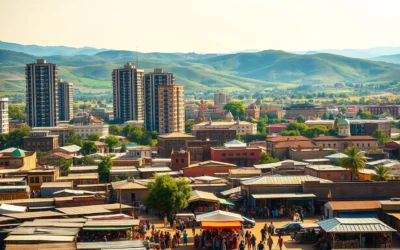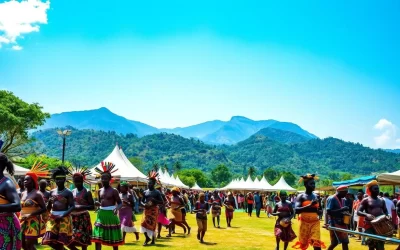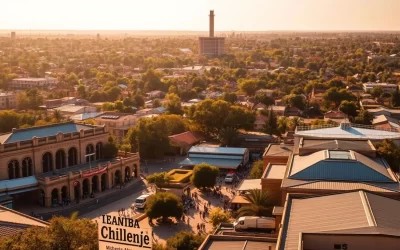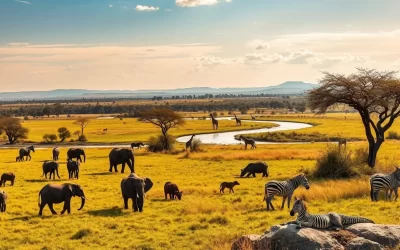Did you know that over 70% of tourists in Zambia rely on a mix of cash and cards for their transactions? If you’re planning a trip, understanding the local exchange rate and payment options is essential. This guide is designed to help US travelers navigate the financial landscape with ease.
From visa requirements to the best ways to carry your money, we’ve got you covered. US dollars are widely accepted, but knowing when to use cash or a travel money card can save you time and hassle. We’ll also share tips on avoiding common pitfalls like ATM outages and transaction fees.
Whether you’re exploring Lusaka or embarking on a safari, this guide ensures you’re prepared. Let’s dive into the details and make your trip smooth and stress-free!
Understanding Zambia’s Currency Landscape
Navigating the financial system in a new country starts with understanding its currency. In Zambia, the official currency is the Zambian Kwacha (ZMW). This is the only legal tender used for all local transactions, from markets to restaurants. Knowing the basics of this currency will help you manage your expenses more effectively.
Overview of the Zambian Kwacha
The Zambian Kwacha is subdivided into 100 ngwee, though coins are rarely used in daily transactions. Banknotes come in denominations of 2, 5, 10, 20, 50, and 100 Kwacha. Having the right denominations is essential, as smaller vendors may not have change for larger bills.
Currency Denominations and Exchange Rates
When converting USD to ZMW, the exchange rate plays a crucial role. Rates fluctuate based on market conditions, so it’s wise to check the current rate before exchanging money. A competitive rate can help you stretch your travel budget further.
Fluctuations in the exchange rate can impact your daily spending. For example, a stronger Kwacha means your USD will buy less, while a weaker Kwacha can make your money go further. Staying informed about these changes ensures you’re prepared for any financial surprises.
Understanding Zambia’s currency landscape is the first step towards smart financial planning abroad. Whether you’re shopping at local markets or paying for services, knowing the Zambian Kwacha and its denominations will make your trip smoother and more enjoyable.
Essential Payment Methods in Zambia
When visiting a new country, knowing your payment options can make your trip smoother. In Zambia, you’ll find a mix of traditional and modern methods to suit your needs. Whether you prefer cash or a credit card, understanding the pros and cons of each will help you manage your expenses effectively.
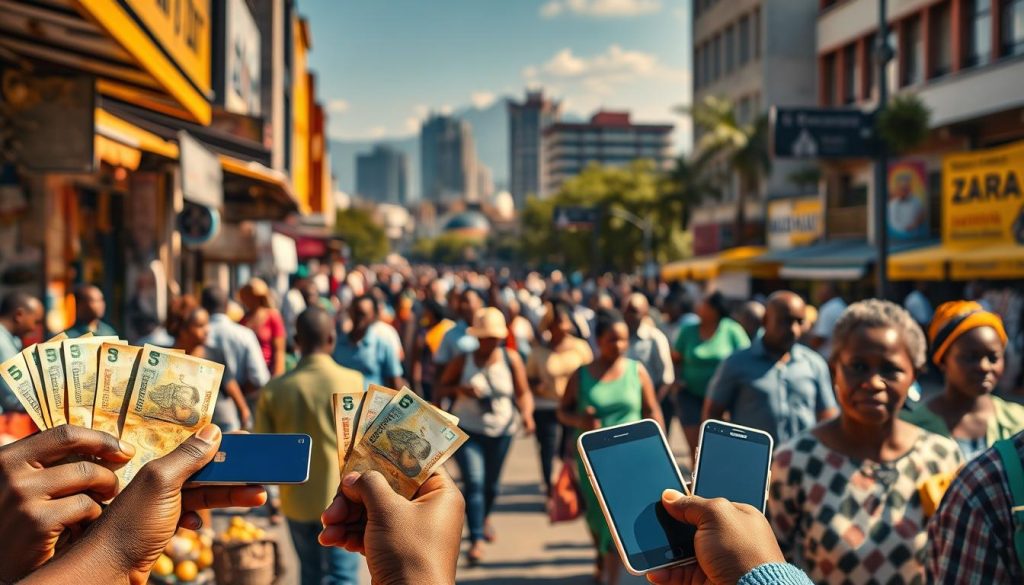
Cash and Credit Card Options
Cash is widely accepted, especially in local markets and smaller establishments. US dollars are often used for domestic transactions, but it’s wise to carry smaller denominations for convenience. Vendors may not always have change for larger bills, so plan accordingly.
For larger purchases, credit cards like Visa, MasterCard, and American Express are becoming increasingly popular. However, be aware that many businesses add a surcharge of around 5% for card transactions. Always ask about fees before paying to avoid surprises.
Mobile Wallets and Contactless Payments
Digital payment methods are gaining traction, offering a secure and convenient alternative. Mobile wallets allow you to make payments directly from your phone, reducing the need to carry physical cash. Contactless options are also available in major cities, making transactions quick and hassle-free.
ATMs are prevalent in urban areas and airports, providing easy access to local currency. However, check with your bank about international withdrawal fees to avoid unnecessary charges. Combining these methods ensures flexibility and security throughout your travel experience.
Getting Your Visa and Entry Requirements
Planning your trip involves more than just packing your bags; understanding entry requirements is key. Whether you’re visiting for business or leisure, knowing the visa process and health guidelines ensures a smooth arrival.
Visa on Arrival Process for Eligible Travelers
If you’re eligible for a visa on arrival, the process is straightforward. At major airports like Kenneth Kaunda International Airport, you’ll need to present your passport, proof of onward travel, and the required fee in USD. Single-entry visas cost $25, while double-entry visas are $40.
Here’s what to prepare:
- Passport with at least 6 months validity and 3 blank pages.
- Cash in USD for visa fees (credit cards may not be accepted).
- Proof of accommodation or travel itinerary.
Processing is usually quick, but having all documents ready can help avoid delays.
COVID-19 Updates and Health Considerations
As of March 21, 2023, all COVID-19 travel restrictions have been lifted. You no longer need to provide vaccination proof or test results for entry. However, it’s always wise to check for updates before your trip.
Health tips for your visit:
- Carry a basic first-aid kit, including over-the-counter medications.
- Be cautious with medications containing diphenhydramine, as it’s a controlled substance locally.
- Consider malaria prophylaxis, as the disease is endemic in the region.
Staying informed about health requirements ensures a safe and enjoyable trip.
Before you leave, verify the latest visa and health guidelines on official websites like the UK government or Zambia immigration portals. Preparing in advance will make your entry process seamless and stress-free.
Travel Money Cards: How They Work in Zambia
Managing your finances abroad can be simpler with the right tools. A travel money card is a prepaid option designed for international use. It allows you to load funds in USD and convert them to local currency like the Zambian Kwacha (ZMW) at competitive rates. This flexibility makes it a popular choice for travelers.
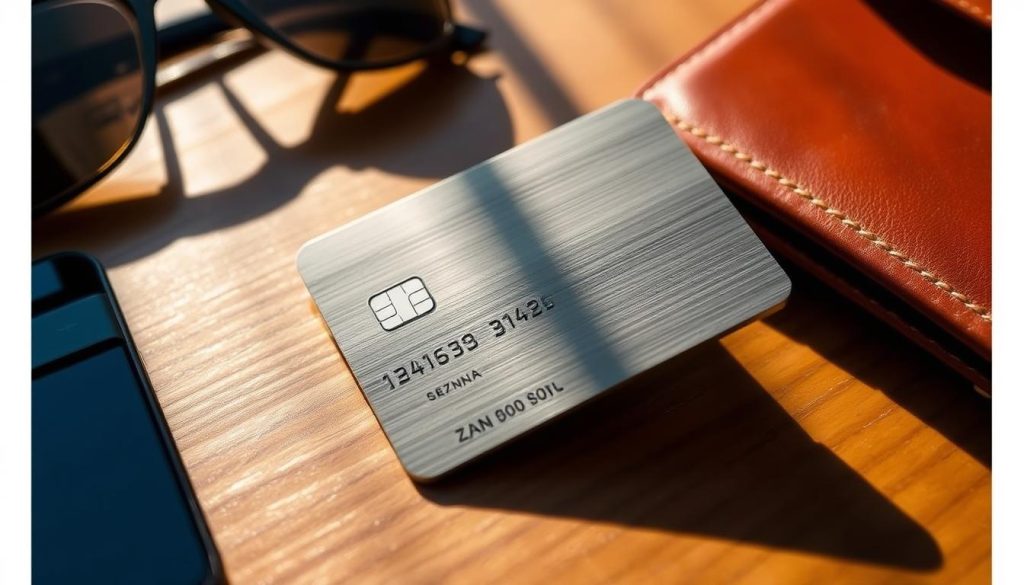
Benefits of a Prepaid Travel Money Card
One of the main advantages of a travel card is its security. Since it’s not linked to your main bank account, your primary funds remain protected. Additionally, these cards often offer fee transparency, so you know exactly what you’re paying for.
Another benefit is the ability to withdraw cash from ATMs with minimal or no fees, depending on the provider. Some cards even offer free withdrawals within monthly limits. This can save you money compared to traditional bank cards.
Setting Up and Using Your Card
To get started, choose a reputable provider like Wise, Chime, Monzo, or Netspend. Load your card with USD before your trip, and use the provider’s app to convert funds to ZMW at favorable exchange rates. This ensures you’re ready to pay for everyday expenses upon arrival.
Here’s a quick comparison of popular options:
| Card | Key Features |
|---|---|
| Wise | Low conversion fees, multi-currency support |
| Chime | No foreign transaction fees, easy app management |
| Monzo | Free ATM withdrawals abroad, budgeting tools |
| Netspend | Wide ATM network, reloadable options |
Before you leave, ensure your travel money card is activated and ready to use. This preparation will make your trip smoother and more enjoyable.
Zambia: Ultimate Travelers Guide to Currencies & Payments – Key Financial Tips
Smart budgeting can make your trip more enjoyable and stress-free. By planning ahead, you can avoid unnecessary expenses and focus on creating unforgettable memories. Here are some practical tips to help you manage your finances effectively.
Top Tips for Managing Your Budget
Start by estimating your daily expenses. For example, budget travelers spend around $627 daily, while mid-range travelers may spend $1,682. Luxury travelers should plan for $4,829 per day. Knowing these averages helps you set realistic expectations.
Using a travel money card can save you money on foreign transaction fees. These cards often offer competitive exchange rates and low or no ATM withdrawal fees. Locking in a favorable rate in advance can also protect you from market fluctuations.
Always check the fee structure of your credit card before using it abroad. Many businesses add a 5% surcharge for card payments. To avoid this, carry a small amount of local cash for markets, taxis, and other small expenses.
Plan your cash withdrawals carefully to minimize bank fees. Withdraw larger amounts less frequently to reduce transaction costs. Keep track of your spending using mobile banking features to stay within your budget.
Here’s a quick comparison of budgeting strategies:
| Strategy | Benefit |
|---|---|
| Use a travel money card | Low fees, competitive exchange rates |
| Carry local cash | Convenience for small purchases |
| Monitor spending | Avoid overspending, stay on budget |
By following these tips, you can make the most of your trip without worrying about financial surprises. A little planning goes a long way in ensuring a smooth and enjoyable experience.
Comparing Travel Money Cards for Zambia
With so many travel card options available, picking the best one can be overwhelming. Each card offers unique features, from low fees to multi-currency support. Understanding these differences helps you choose the right option for your needs.
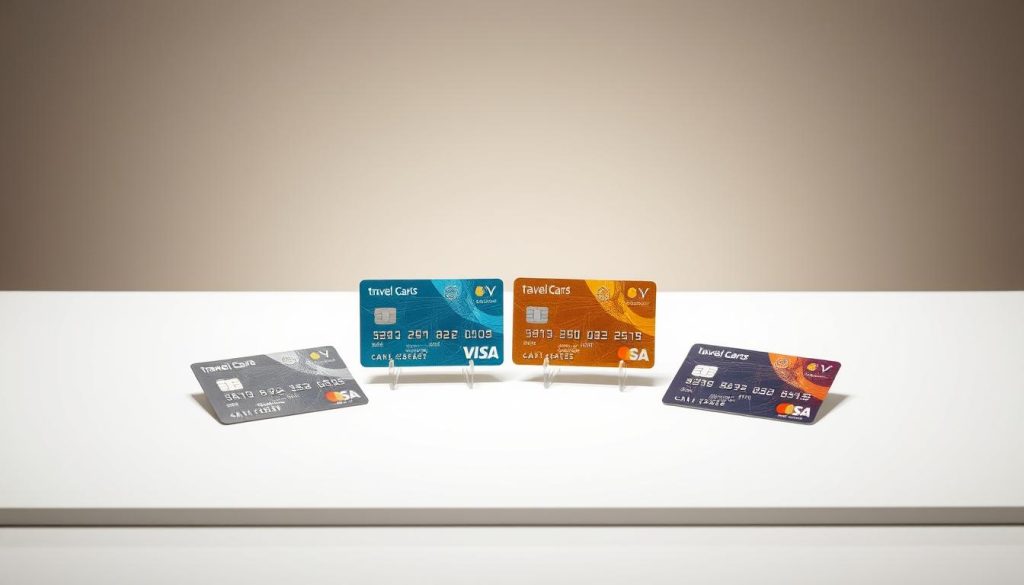
Wise, Chime, Monzo, and Netspend Comparison
Here’s a detailed comparison of popular travel money cards to help you decide:
| Card | Key Features | Fees |
|---|---|---|
| Wise | Multi-currency support, low conversion fees | First two ATM withdrawals free, then $1.50 + 2% |
| Chime | No foreign transaction fees, easy app management | No monthly fees, free ATM withdrawals |
| Monzo | Free ATM withdrawals abroad, budgeting tools | No fees for spending in local currency |
| Netspend | Wide ATM network, reloadable options | Monthly fee of $5, ATM withdrawal fees apply |
Choosing the Right Card for Your Needs
When selecting a travel card, consider your spending habits and budget. For frequent travelers, Wise’s multi-currency support is a great option. If you prefer simplicity, Chime’s no-fee structure might suit you better.
For those who need flexibility, Monzo offers free ATM withdrawals and budgeting tools. Netspend is ideal for travelers who need a wide ATM network and reloadable options. Always check recent customer reviews to gauge satisfaction.
Here are some tips to help you decide:
- Compare fee structures to avoid hidden costs.
- Look for cards with competitive exchange rates.
- Choose a card that aligns with your travel style.
By understanding the features and price points of each card, you can make an informed decision that enhances your travel experience.
Managing ATM Withdrawals and Overseas Card Usage
Making the most of ATMs and cards overseas can save you time and money. Understanding how to use them efficiently ensures you stay within budget while avoiding unnecessary fees. Whether you’re withdrawing cash or using a card for transactions, a little planning goes a long way.
ATM Fee Structures and Daily Limits
When using ATMs abroad, fees can add up quickly. In Zambia, most ATMs charge a small fee per withdrawal, typically ranging from $2 to $5. Some local banks may also impose additional charges, so it’s wise to check before using an atm.
Daily withdrawal limits vary by bank but usually range from $200 to $500. Knowing these limits helps you plan your cash needs effectively. For larger expenses, consider using a travel money card to minimize fees.
Reducing Fees with Travel Money Cards
Using a travel money card can significantly reduce overseas transaction costs. These cards often offer competitive exchange rates and low or no ATM withdrawal fees. Providers like Wise and Monzo even allow free withdrawals within monthly limits.
Here’s a quick comparison of popular travel cards:
| Card | Key Features | ATM Fees |
|---|---|---|
| Wise | Low conversion fees, multi-currency support | First two withdrawals free, then $1.50 + 2% |
| Monzo | Free ATM withdrawals abroad, budgeting tools | No fees for spending in local currency |
Monitoring Your Balance and Avoiding Overcharges
Keeping track of your spending is essential to avoid overcharges. Use your phone’s banking app to monitor your balance in real-time. This helps you stay within your budget and avoid unexpected fees.
Here are some additional tips:
- Withdraw larger amounts less frequently to minimize atm fees.
- Always verify the fee structure at local banks and ATMs.
- Check with your card provider about free monthly withdrawals.
By following these strategies, you can make the most of your cash and card usage while traveling. A little preparation ensures a smoother and more cost-effective experience.
Avoiding Hidden Fees and Foreign Transaction Costs
Traveling abroad often comes with unexpected costs, but knowing how to avoid hidden fees can save you money. From foreign transaction fees to ATM surcharges, understanding these costs ensures you stay within budget. Let’s explore how to spot and avoid unnecessary charges.

Understanding Surcharges and Transaction Fees
When using your card overseas, you may encounter additional charges. Foreign transaction fees typically range from 1% to 3% of each purchase. For example, a $100 purchase could cost you an extra $3 or more. These fees cover currency conversion and processing costs.
Dynamic currency conversion (DCC) is another common pitfall. This occurs when a merchant offers to charge you in your home currency instead of the local one. While it might seem convenient, the exchange rate is often less favorable, leading to higher costs.
How to Spot Unnecessary Charges
Always check your card’s fee schedule before traveling. Look for cards with no or low foreign transaction fees. Providers like Wise and Revolut offer competitive rates and transparent fee structures.
Here are some tips to avoid hidden costs:
- Decline DCC offers and pay in the local currency.
- Use ATMs affiliated with your bank to minimize withdrawal fees.
- Top up your travel money card in advance to lock in favorable rates.
By staying informed and proactive, you can avoid unnecessary expenses and make the most of your travel budget.
Smart Currency Exchange Tips
Timing your currency exchange can make a big difference in how far your money goes. Whether you’re traveling for business or leisure, understanding the best practices for exchanging USD to ZMW ensures you get the most value. Here’s how to navigate the process like a pro.
Best Times to Exchange USD for ZMW
Currency exchange rates fluctuate based on global market conditions. To get the best rate, monitor trends and exchange when the market is favorable. Avoid last-minute exchanges at airports, as they often charge higher fees and offer less competitive rates.
Instead, use local banks or ATMs for better exchange options. These locations typically offer mid-market rates, which are more transparent and cost-effective. For example, exchanging $100 at a bank could save you $5 or more compared to airport kiosks.
Travel money cards are another great option. They allow you to lock in favorable exchange rates in advance, protecting you from sudden fluctuations. Providers like Wise and Revolut offer competitive rates and low fees, making them ideal for frequent travelers.
Here are some additional tips for smart currency exchange:
- Track market trends to identify the best time to exchange.
- Compare rates from multiple providers to find the best deal.
- Plan your exchanges well before your trip to avoid last-minute stress.
By following these strategies, you can maximize your travel budget and avoid unnecessary costs. A little planning goes a long way in ensuring a smooth and cost-effective experience.
Using Your Travel Money Card Safely
Keeping your finances secure while traveling is easier with a travel money card. These cards come with advanced security features that protect your funds and give you peace of mind. Whether you’re exploring bustling cities or remote areas, knowing how to use your card safely ensures a hassle-free experience.
Security Features and Best Practices
Modern travel money cards are designed with safety in mind. Many providers offer two-factor authentication, instant transaction alerts, and app-based controls. These features allow you to monitor your payments in real-time and detect any suspicious activity quickly.
Here are some key safety features to look for:
- Two-factor authentication: Adds an extra layer of security to your account.
- Instant alerts: Notifies you of every transaction via your phone.
- App-based controls: Lets you freeze or cancel your card instantly if needed.
Using these features ensures your funds are protected, even if your card is lost or stolen.
How to Freeze or Cancel Your Card Quickly
If your travel money card is lost or stolen, acting fast is crucial. Most providers allow you to freeze or cancel your card directly from their app. Here’s a step-by-step guide:
- Open the app linked to your card.
- Navigate to the security settings.
- Select the option to freeze or cancel your card.
- Confirm your decision to complete the process.
By following these steps, you can prevent unauthorized use and protect your funds immediately.
Here’s a comparison of security features offered by popular travel money cards:
| Card | Security Features |
|---|---|
| Wise | Two-factor authentication, instant alerts, app-based controls |
| Chime | Instant notifications, card lock feature via app |
| Monzo | Real-time alerts, freeze card option, budgeting tools |
| Netspend | Transaction alerts, card lock feature, reloadable options |
Using a travel money card is a secure alternative to carrying large amounts of cash. By employing these best practices, you can enhance your financial security and enjoy a worry-free trip.
Overcoming Challenges and Common Pitfalls
Traveling to a new destination can be exciting, but it’s essential to stay aware of potential challenges. Being prepared helps you avoid common pitfalls and ensures a smoother experience. Here’s how to navigate potential issues and stay safe during your trip.
Staying Alert to Scams and Unsafe Practices
Scams can happen anywhere, but being vigilant can protect you. One common type of scam involves overcharging for services, especially in taxis or markets. Always verify prices before agreeing to any transaction. If something feels off, trust your instincts and walk away.
Another point to remember is to never share personal information with strangers. This includes your hotel details or travel itinerary. Scammers may use this information to target you later. Stay cautious, especially in crowded areas or tourist hotspots.
Steps to Take If You Encounter Suspicious Practices
If you suspect a scam or unsafe practice, act quickly. Contact local authorities or your hotel staff for assistance. They can guide you on the best course of action and help resolve the issue. Reporting such incidents also helps protect other travelers.
Here are some additional tips to stay safe:
- Book reputable services in advance to avoid last-minute risks.
- Use trusted resources and reviews to verify the credibility of service providers.
- Keep emergency contact numbers saved on your phone for quick access.
Planning Ahead to Avoid Common Pitfalls
Preparation is key to a hassle-free trip. Research your destination thoroughly before you go. Know the local customs, common scams, and safe areas to visit. This knowledge can help you avoid unnecessary risks and enjoy your trip more.
Here’s a quick comparison of strategies to stay safe:
| Strategy | Benefit |
|---|---|
| Verify prices | Avoid overcharging and scams |
| Book in advance | Ensure reputable services |
| Stay alert | Prevent theft and fraud |
By following these tips, you can minimize risks and focus on enjoying your journey. A little preparation goes a long way in ensuring a safe and memorable experience.
Local Etiquette and Payment Best Practices
Respecting cultural norms when handling money ensures smoother interactions during your travels. In many countries, how you pay and tip reflects your awareness of local customs. Understanding these practices helps you connect better with locals and enhances your overall experience.
Cultural Payments and Photograph Policies
When making payments, always be mindful of local customs. In restaurants, tipping around 10% is customary at upscale establishments, but smaller eateries may not expect it. For taxi rides, rounding up the fare is a polite gesture. Always carry small bills to avoid inconveniencing drivers or vendors.
Photography is another area where cultural sensitivity matters. Always ask for permission before taking photos of people or sensitive sites. This shows respect and avoids potential misunderstandings. In markets, handle cash discreetly to maintain privacy and security.
Respecting Local Customs
Understanding local etiquette goes beyond payments. In many countries, cash is preferred over cards for small transactions. Using a travel money card is a convenient option, but always have some local currency on hand for markets and rural areas.
Here’s a quick guide to handling money respectfully:
| Scenario | Best Practice |
|---|---|
| Restaurants | Tip 10% at upscale places; no tip at smaller eateries. |
| Taxis | Round up the fare or agree on a price beforehand. |
| Markets | Use cash and handle it discreetly. |
| Photography | Always ask for permission before taking photos. |
By following these tips, you show respect for local customs and create positive interactions. A little cultural awareness goes a long way in making your travel experience more rewarding.
Conclusion
Planning your finances wisely can transform your travel experience. This guide has covered essential tips, from understanding local currency to choosing the best travel card. By keeping an eye on fees and using secure payment methods, you can avoid unnecessary costs and enjoy a stress-free trip.
Make informed decisions that suit your budget and style. Whether you prefer credit cards or cash, planning ahead ensures you’re prepared for any situation. Use the tools and comparisons provided to select a card that meets your needs.
Remember to stay alert to atm fees and exchange rates. With a little preparation, you can maximize your usd and focus on creating unforgettable memories. Start planning today and make the most of your journey!
The above is subject to change.
Check back often to TRAVEL.COM for the latest travel tips and deals.
Here are some Tours & Sightseeing suggestions that might pique your interests!

